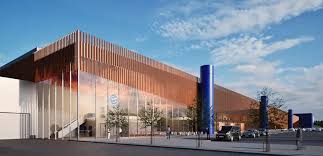
Swedish contractor Skanska says its deliberate, selective strategy for choosing projects is paying off, especially in the U.S. market, which continues to anchor the company’s global performance, according to CEO Anders Danielsson.

“We took important strategic positions some years ago to be more selective,” Danielsson told Construction Dive after the firm’s second quarter earnings call on July 18. “We have the right team in place.”
For Skanska, this means pursuing projects only in sectors and regions where it has deep experience and proven results. That careful approach, Danielsson said, has helped the firm navigate industry-wide challenges like unpredictable tariffs, volatile material costs, and shifting real estate dynamics since the pandemic.
During the earnings call, Danielsson said the contractor’s focus on U.S. construction remains critical to its overall health. Despite global supply chain uncertainties, Skanska’s method of locking in supplier prices before bidding has helped control risks from tariff policy swings.
“We haven’t seen a lot of [impact from tariffs], but we are careful to not to end up in a situation where we suffer from, like price increases,” Danielsson said. “And so we are very careful before we bid for a project, we secure the prices from our suppliers.”
When unexpected cost spikes do occur, Skanska works to pass them along to clients when possible. Danielsson pointed to the firm’s experience during the COVID-19 pandemic, when construction input costs jumped dramatically.

Skanska’s U.S. civil market pipeline remains a bright spot. Danielsson said the company expects “strong demand for traditional infrastructure,” with public money still flowing into schools, hospitals, airports, and data centers. These priority sectors continue to offset weaknesses elsewhere, particularly in commercial property development.
Remote work trends have softened demand for new office builds, but Danielsson sees signs of optimism as companies shift focus to higher-quality workplaces in prime locations. “I’m sure most companies want their employees back to office,” he said. “So that trend will continue.”
By the numbers, Skanska posted Q2 operating income of 1.8 billion Swedish crowns ($186 million USD) — down about 30% year-over-year — largely due to slower commercial real estate activity. Still, construction remained robust, delivering 1.7 billion crowns in profit, with nearly half coming from its U.S. business alone.
The company’s backlog remains healthy at 268 billion crowns, representing more than 26 months of booked work in the U.S. Danielsson said that backlog strength, plus the firm’s disciplined risk controls, should help Skanska weather market shifts as interest rates and materials pricing evolve.
Even as tariffs continue to pose questions for international contractors, Skanska’s strong reliance on local supply chains has provided extra insulation. Danielsson said that so far, the company hasn’t seen a surge in competition for domestic U.S. materials, helping maintain cost stability on its large civil and infrastructure projects.
Looking ahead, Skanska plans to stick with its proven model: stay selective, lean on reliable markets like the U.S., and pass on projects that don’t align with its risk profile. “We have the right team in place,” Danielsson reiterated.
Originally reported by Zachary Phillips in Construction Dive.